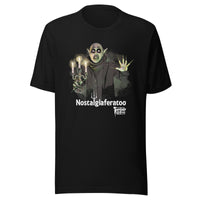9 things you might not know about 'Car 54, Where Are You?'
Learn how the Bronx, detergent, the New York Dolls and Snow White all link to this classic sitcom.

There's a holdup in the Bronx… On September 17, 1961, Officers Toody and Muldoon headed out on their first assignment on Car 54, Where Are You? We thought it would be funny to serve up 54 things you might not know about a 54-year-old series.
But that is a lot of unknown things to dig up on a television comedy. Instead, we offer five-plus-four trivia tidbits about the sitcom. Martin Grams, Jr.'s book Car 54 Where Are You? (2015) was a valuable resource.
You can stream select episodes of 'Car 54, Where Are You?' on our website here.1. It was originally called 'The Snow Whites.'

The working script and pilot episode curiously went under the title The Snow Whites, which probably delighted the show's sponsor, detergent manufacturer Proctor & Gamble. Yet that name would undoubtedly lead to confusion, considering the show's Sunday night lead-in on NBC — Walt Disney's Wonderful World of Color. Too many people would expect fairy tales and dwarves. Stumped for a title, producers decided to use the closing line of the freshly written theme song, written by creator Nat Hiken and composer John Strauss.
Image: AP Photo
2. What the heck does "Khrushchev's due at Idlewild" mean in the theme song?

Well, Khrushchev was the leader at the Soviet Union at the time, of course. Idlewild is the former moniker of JFK Airport, called so because it was built over a golf course of the same name. Idlewild was renamed JFK on Christmas Eve, 1963 — eight months after the final episode. If Car 54 had made it another season, would they have changed the tune to "Brezhnev's due at JFK"?
Image: AP Photo/ Harold Filan
3. The cars used on the show were red and white.

New York City police cruisers of the era were dark green with black side panels and white tops. However, the Plymouth Savoys seen on screen were painted candy red for a couple reasons. First, the show was shot in black & white, and the red made for a more appropriate shade of gray on film. Also, there's this next fact…
Illustration: Jeannine Riske / MeTV
4. It was actually filmed on location in the Bronx.

With the prop cars zooming around the New York City streets, the red color clearly set them apart from real police vehicles. There would be no confusing these guys for real cops. Interiors were shot in the borough's Gold Medal Studios, also the home for the production of Naked City. The studio burned down in 1980. The site is now home to the New York Department of Sanitation.
5. It was divisive amongst television critics.

Speaking of sanitation, the show was not highly regarded by some writers. Many critics were upset by a comedic take on those who protect and serve. The Chicago Sun Times deemed it "a preposterous (and sometimes cruel) depiction of the policeman." The Dallas Times Herald stated, "The humor might be there, all right, but not much of it was showing." The Alabama Journal complained, "It is insulting to the law enforcement and to the general public." Just as many adored the show. The Boston Record proclaimed, "How can a show which asks us to laugh at the police be anything but a hit?"
6. Four cars were supplied by Chrysler for the first season, seven for the second.

The automaker gave the producers three Plymouth sedans and a Dodge Dart for filming the first year. For season two, the order was hiked up. Hiken asked for 1962 Chrysler New Yorker for his own personal use, and two Plymouth Furys were made available for stars Joe Ross and Fred Gwynne. Gwynne lived in the suburbs and would drive home after filming.
Oh, and here's a bonus fact: Gwynne wrote and illustrated children's books at the time.
7. Series creator Nat Hiken was the man behind Bilko.

A relatively unheralded comedy genius, Hiken had an eye for funny. Both Fred Gwynne, who played Muldoon and who would go on to become Herman Munster, and Alan Alda of M*A*S*H made their first appearances on The Phil Silvers Show.
Image: AP Photo
8. The laugh track was not canned.

The "Laff Box," an invention of sound engineer Charles Douglass, had been used on television comedies since the start of the 1950s. Hiken wanted more natural and spontanous laughter. He would screen the episode to an audience and record its reaction, later mixing the recorded laughter back into the soundtrack. For the episode "Something Nice for Sol," a convention of ministers sat in as the audience. They laughed to such a degree that the production of the episode had to be pushed back a week to properly edit and mix the uproar.
9. The lead singer of the New York Dolls starred in the remake.

In 1994, Orion Pictures released a disasterous big screen reboot of Car 54, Where Are You? The bomb featured Rosie O'Donnell and Fran Drescher. In the lead as Officer Toody was David Johansen, former lead singer of glam-punk pioneers the New York Dolls — though perhaps he is better known in some quarters as Buster Poindexter. In one of many poor decisions, the updated take on the comedy was filmed as a musical, though most numbers were later cut out. Fortunately, folks remember the original series and not this turkey.
Image: MGM / Orion







0 Comments










































